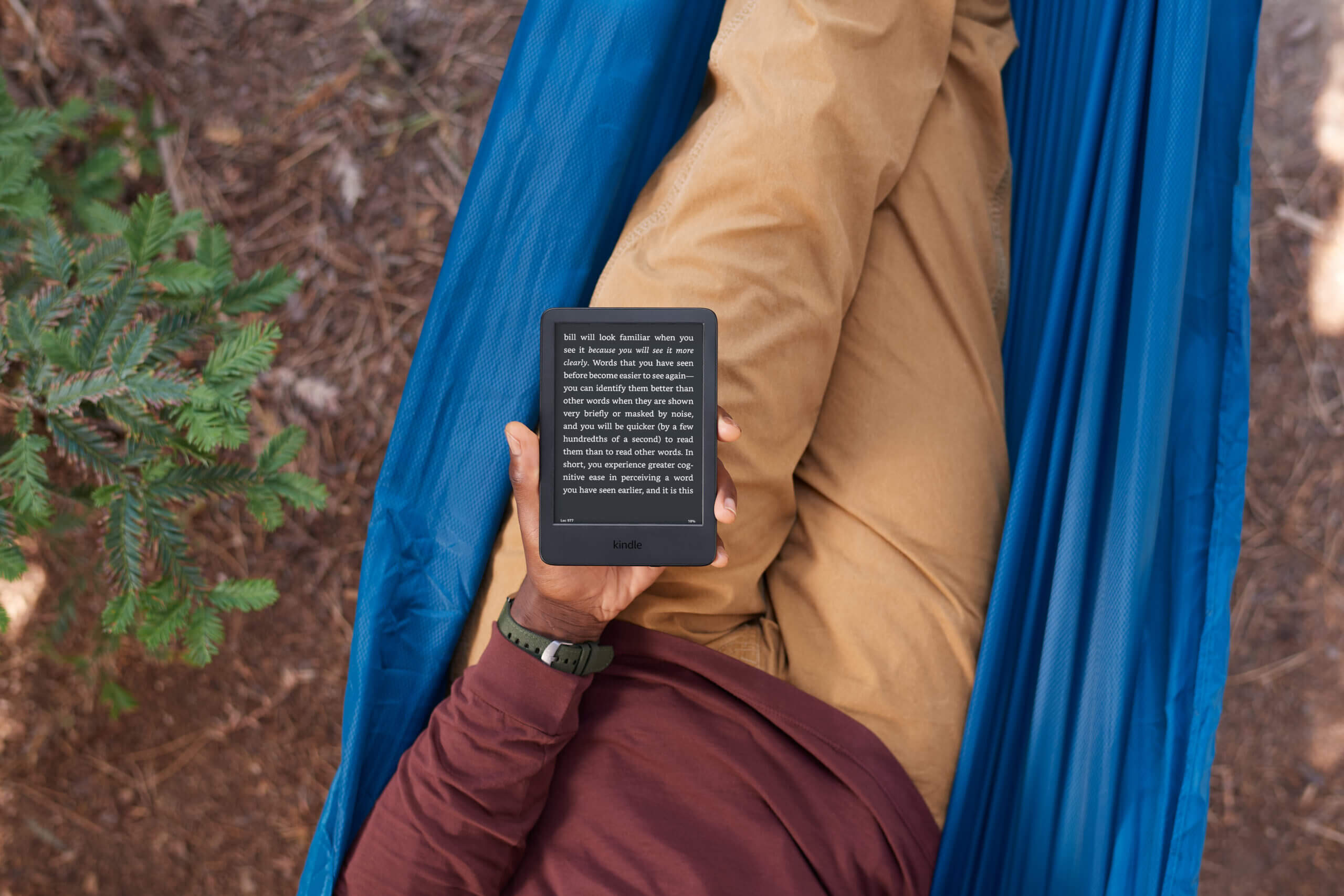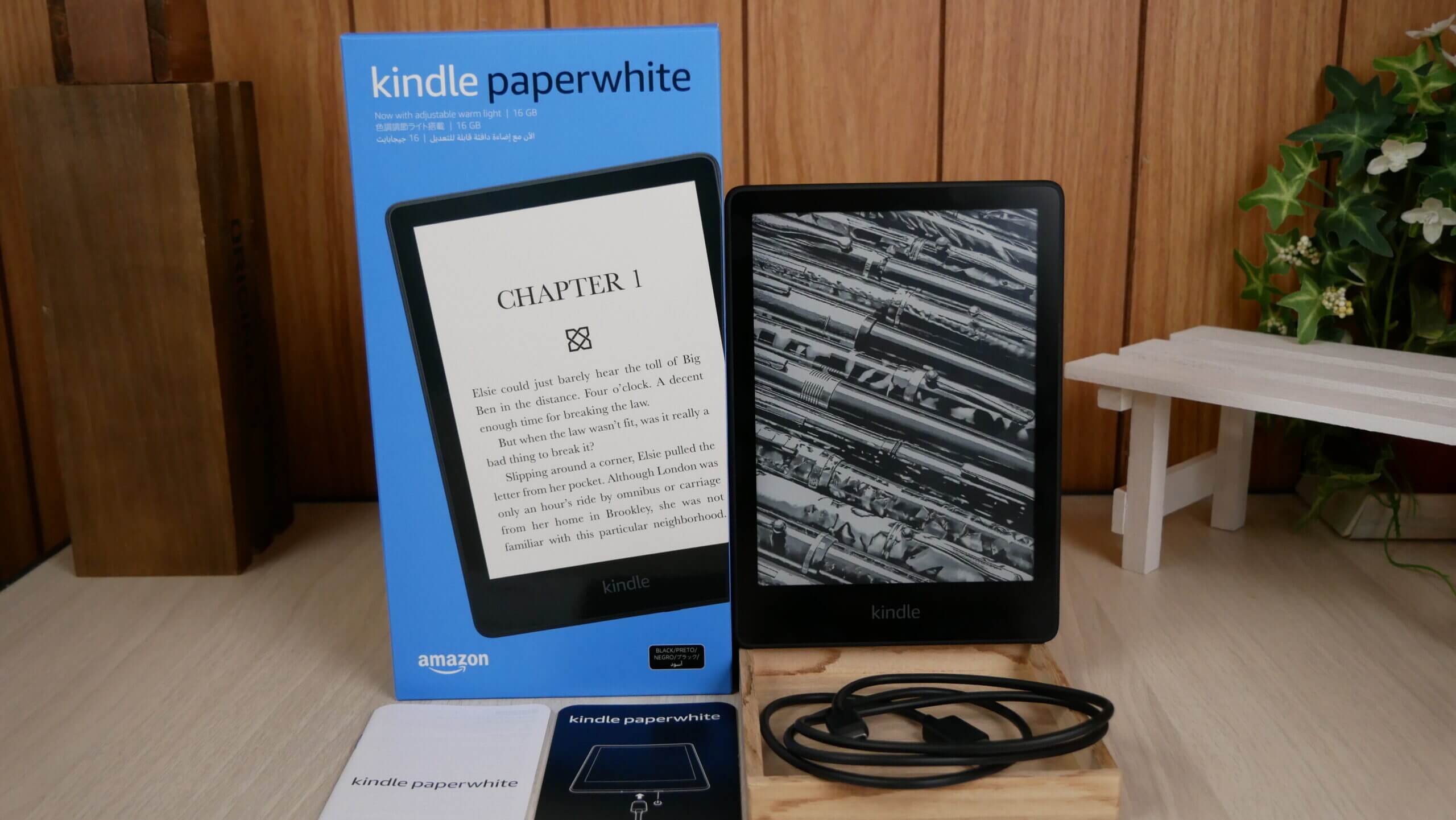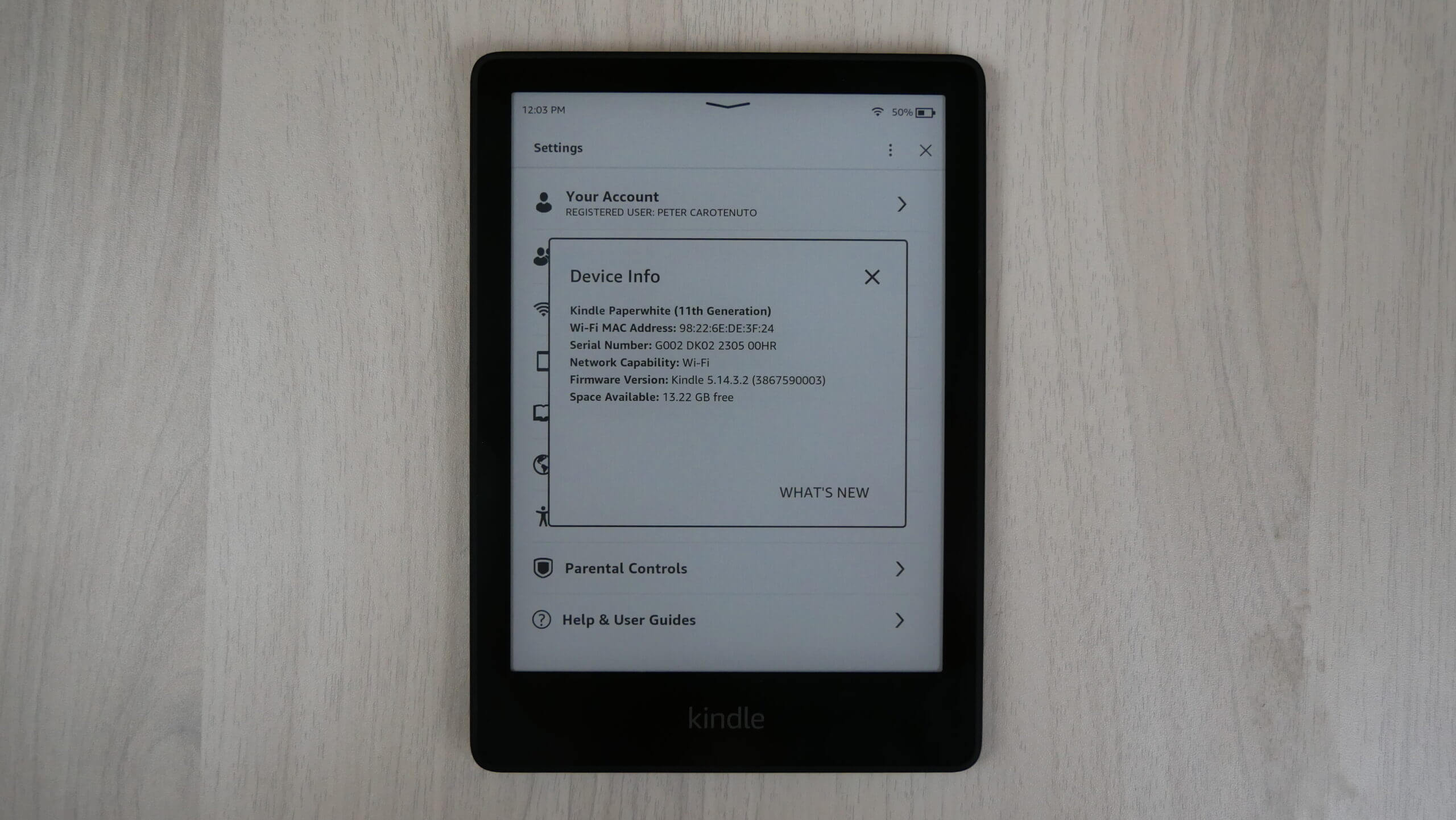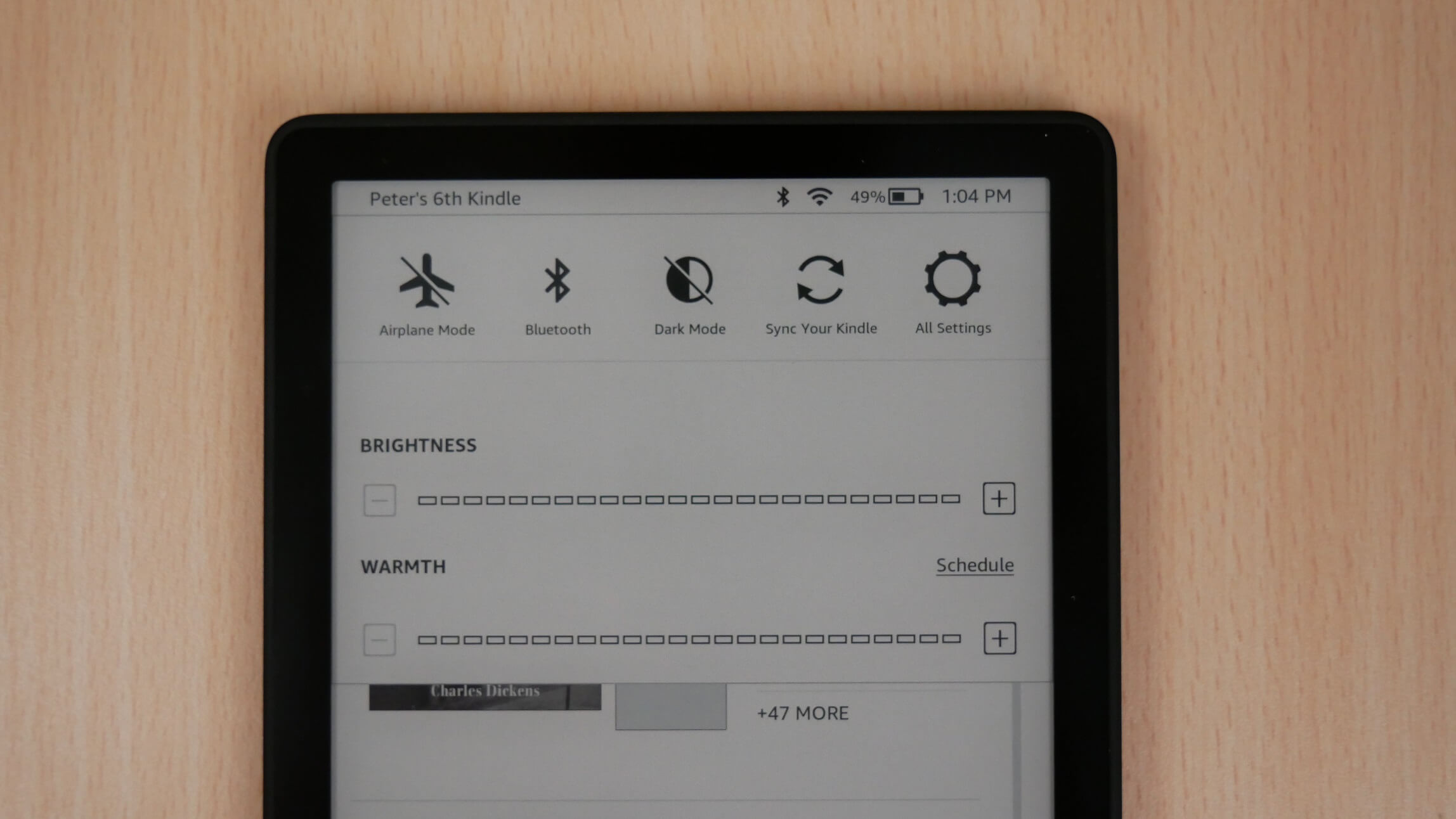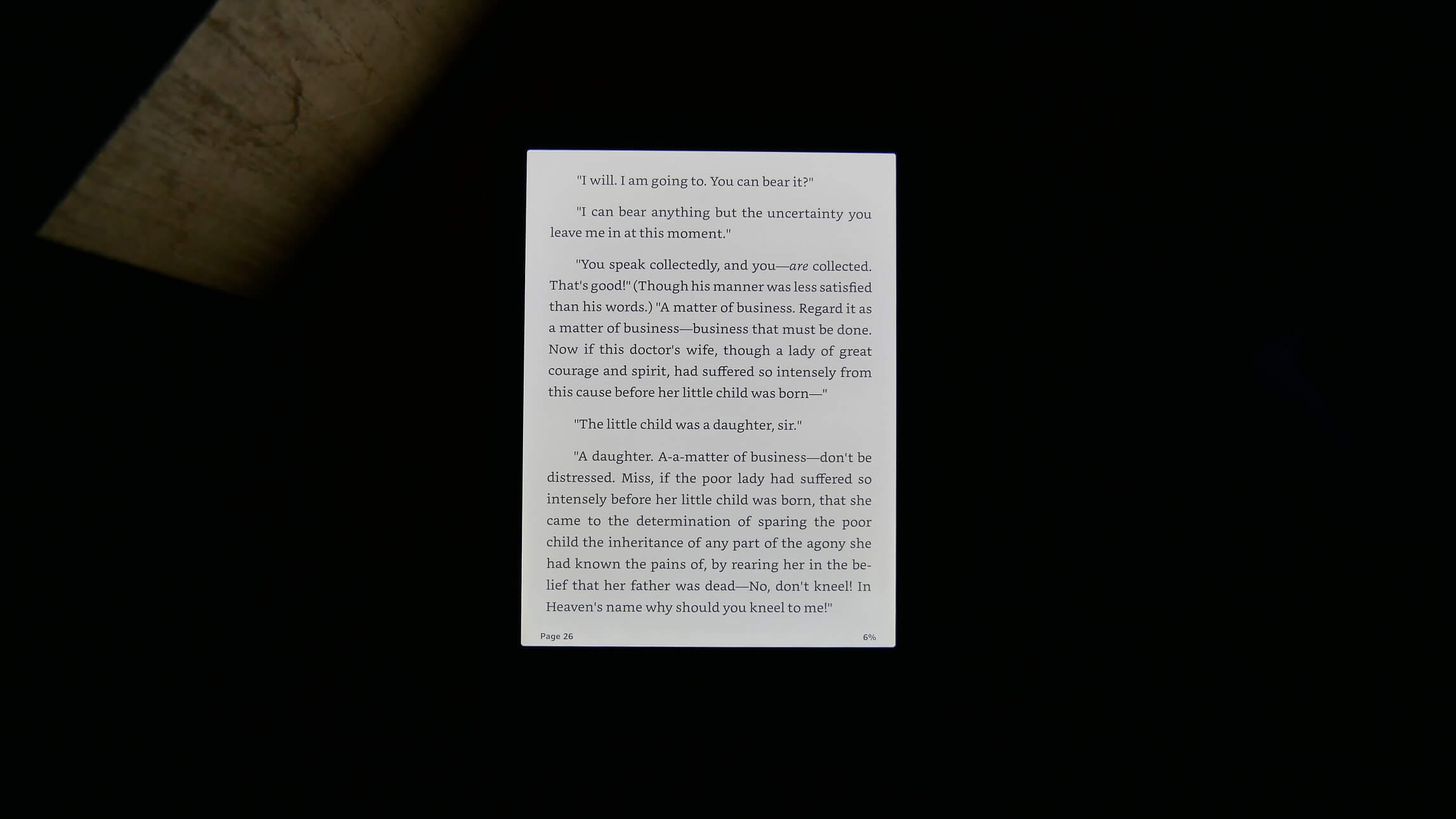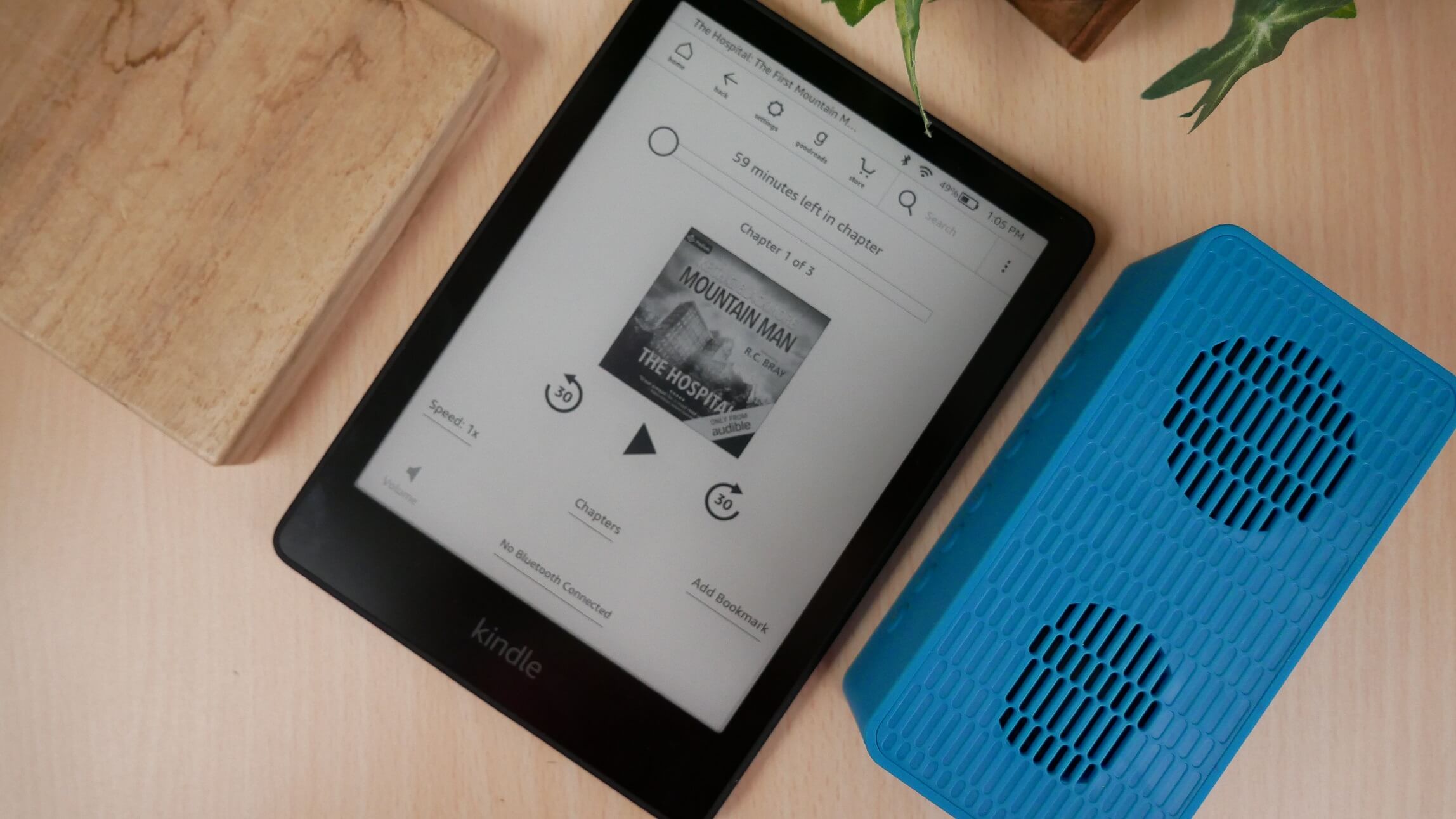Amazon has just released a new 16GB variant of the 11th Generation Kindle Paperwhite. This model now has the standard 8GB model, which has been the only one that has been available since the Paperwhite 5 first came out in late 2021. The 16GB version can be purchased right now and it costs only $10 more than the base model, which makes it the only one you should be considering, if you are in the market for a new e-reader.
Hardware
The Amazon Kindle Paperwhite 11th generation features a 6.8 inch E INK Carta 1200 touchscreen display with a resolution of 1236 x 1648 and 300 PPI. There is a front-lit display and warm lighting system with a total of 17 white and amber LED lights. There is a new system wide Dark Mode that can be pulled down from the drop down arrow above the search bar. It inverts the black and white e-paper display, so the background is black and the fonts are white. You can use the white and warm lighting to customize the brightness of the screen.
The screen is flush with the bezel, protected by a layer of glass. I have found that glass reflects overhead light when reading indoors, such as a lamp. If you are reading outdoors, direct sunlight will also put glare on the screen. To be fair, the vast majority of e-readers have glass that protects the e-paper display.
Underneath the hood is a MT8113 SOC 1 GHZ processor, 512MB of RAM and 8GB or 16GB of internal storage. You will be able to connect it up to your MAC or PC via USB-C to charge it or to transfer digital content. Amazon has decided to not provide cellular options for this generation, so there is no LTE/4G variants for purchase. Likely the company realized that this is nothing but trouble. US and international carriers will be sunsetting their 3G networks later this year. Amazon does not plan on offering any cellular models going forward.
One of the big draws of the Kindle Paperwhite 5 is being able to purchase Audible audiobooks right on the e-reader and connect a pair of wireless headphones or an external speaker. This is because it is running Bluetooth 5.0. The sound quality is very good, but entirely depends on the quality of Bluetooth accessories. It is rated IPX8 to protect against accidental immersion in up to two meters of fresh water for up to 60 minutes, and up to 0.25 meters of seawater for up to 3 minutes. This is useful if you are reading in the bathtub or if you spill something on the Kindle, you can simply run it under tap water to clean it, without having to worry about damaging it. What is interesting about the USB-C port, is that it has moisture detection. If the device is wet, a notification will appear on the screen, and you will be unable to charge your Kindle until it is dry. Amazon says you can still use your Kindle after getting a liquid detection notice, but you just won’t be able to charge. The battery will last around ten weeks, which is very solid for an e-reader. It is powered by a 1700 mAh battery and the dimensions are 124.6 x 174.2 x 8.1 mm and weighs 205g.
The Paperwhite 5 is very minimalist, compared to previous models. The back is jet black and has a piano black embossed logo that says, Kindle. On the bottom of the unit is the USB-C port, power button and status indictor light. There is no home button or manual page turn buttons, there also isn’t any expandable storage via an SD card. It’s also built with sustainability in mind – 60% post-consumer recycled plastics, 70% recycled magnesium, plus, 95% of the device packaging is made of wood fiber-based materials from responsibly managed forests or recycled sources. However, since the retail packaging is recycled cardboard it tends to be flimsy.
Software
If you are upgrading to the Paperwhite 5 from an older Kindle, the new home screen experience might get some getting used to. Gone are the days where the home screen is basically your library, populated with books and your own content. The navigation bar has been removed, so there are no icons with text underneath, linking to services such as the Store, Home, Library, Goodreads and settings. Now, there is a giant search bar at the top of the screen with the store icon next to it. Goodreads and other functionality have been moved to the settings menu.
Above the search bar is a drop down menu that can set your Kindle into airplane mode, which disables the WIFI, engage Dark Mode, establish a WIFI network or Bluetooth connection and access the settings menu. There really isn’t anything critical in the settings menu that you really need to be concerned about. All of your reading options, such as font-type, font size, margins and everything else are controlled in the reading part.
The main home screen primarily comprises of the last 3-4 books you have purchased or are in the process of reading, this is pretty standard fare. What I don’t really like about this is 70% of the screen is audiobook and ebook recommendations from the Kindle Store. There is a slider bar on the right side, and all you see is just Amazon trying to sell you things.
The bottom navigation bar has a link to the library and a Home button. In the middle of these two entries is cover art of the last book you currently had open, if you click on it, it just opens up automatically, which is nice. The library button is your standard Kindle library, you can sort by list or cover view and there other options to sort by books, audiobooks and documents.
The Paperwhite 16GB might sound like a good amount of storage, however when you unbox it for the first time and set it up, there is only 13GB available. This is because the Linux operating system takes up a lot of room. Still, this is a reasonable amount of storage if you are just going to be reading books, comics, manga and other digital content. You could feasibility buy audiobooks from the Kindle Store, but you will only be able to have 4-9 titles on your Kindle at any given time, before you run out of storage. Luckily, all of your Kindle purchases are stored on the Amazon cloud, so everything is synced there. If you have the Kindle app on your iPhone, iPad or Android phone, everything you buy on your Kindle will be viewable or listened to on those devices too.
The 11th Generation Paperwhite 16GB is a very good model, from a software level. There isn’t anything dramatically different from the 8GB that came out last year. I looked at the entire device, looking for any new features or enhancements and there aren’t any. Still, I wanted to conduct this review so you can get a sense on what this brings to the table and if you should buy it or not.
Reading and Listening
The Kindle Store is likely the best digital bookstore in the world, they have the most content, when compared to Barnes and Noble Nook, Kobo or the Google Bookstore. This is likely due to them having far more relationships with publishers. You will find all of the latest bestsellers, timeless classics and also comics, magazines, manga, newspapers. You can search or click on titles you are interested in and download free samples to the library. There is also a buy it now button, basically the book description page looks very similar to the page on the Amazon website, including user reviews.
Audiobooks are a big draw, Audible is the most successful company in this space and have been around the longest. In select markets users will have another tab next to the bookstore, that says audiobooks. You can buy and listen to them right on the Kindle with the accompanied audiobook player. This is not fully featured as their main client for the Audible app for Android or iOS, but you can adjust the volume, playback speed, jump ahead to chapters, access the table of contents and even stop the audiobook from playing, after a certain timeframe, useful for people who like to fall asleep, while listening. It says at the very bottom what Bluetooth device is connected and you can even make a bookmark.
I like the feature where you can jump ahead or back 30 seconds. Really useful if you are leaving an audiobook playing, while run outside for a few minutes or take the trash to the curb, and can just jump back a minute or two and catch up with what you missed.
The Paperwhite was designed for all of your book purchases to be made from Amazon. You can read ebooks in Kindle Format 8 (AZW3), Kindle (AZW), TXT, PDF, unprotected MOBI, PRC natively; HTML DOC, DOCX, JPEG, GIF, PNG, PMP through conversion; Audible audio format (AAX). The Paperwhite also supports EPUB, but you can only load these on your Kindle with the Send to Kindle apps. It works on the Kindle app for Android and iOS, in addition to the Chrome browser extension, Send to Kindle by Email and the Send to Kindle for PC/MAC. When you send an EPUB to your Kindle, it stealthy converts it to an AZW file and this is what you would read. The Kindle does not read the EPUB format, so if you load it in via Calibre/Windows Explorer, the file won’t be readable.
When you first start reading a book, you will notice a profile section of the reading app. Here is where you can name the user and establish your favorite reading parameter’s. This is useful if you share your Kindle with other members of your family, but if you are a solo reader, you don’t really need to set this up.
One of the best new features of the Paperwhite 5 is the new page turn animation system. You can seamlessly blend pages, when flipping the page to another. This is a nice transitionary process, that is quite different than the Kindle app for Android or IOS, which have peak and turn animations. Speaking of page turns, this model has increased the speed by 20%, so they are even faster than the previous generation Paperwhite. This is due to the E INK Carta 1200 e-paper panel it is using.
When reading a book, you can simply pinch and zoom to increase the size of the font. This is useful, since you no longer have to do this exclusively on the Aa menu. There are some options you can do while reading, such as long-pressing on a specific word or body of text. This will provide options, such as making a note, highlights or annotations. You can lookup words in the built in dictionary and also checkout what Wikipedia says. The Kindle also uses Bing Translations on all of their e-readers, so you can translate a specific word or a body of text from one language to another. If you highlight a block of text or a single word, instead of looking them up you can share them via Facebook, Twitter, GoodReads or Email.
All Kindle models have a system called X-Ray. If you have never used it before, it basically breaks down people, places and things. It will tell you all of the major and minor characters in the book and let you know on what page they were referenced and give a quick character biography. The Paperwhite 5 has an option in X-Ray called “Images” which will show you all of the images in a book you are reading. Most books just have cover art, but there are many genres such as autobiographies that have dozens.
The PDF experience is actually the best out of all of the Paperwhites released in the past. When you load PDF files on the device it handles them like a champ. A small mini-map with a screenshot of whatever page is displayed will be on the bottom right hand corner. This will help orientate and display the exact positioning. Page turn speeds are noticeably diminished compared to an ebook, but Kindles really weren’t built to support the format in a meaningful way. Overall there are a few notable features with PDF support. You can pinch and zoom to a piece of text and you can highlight it, select specific words or a body of text. There is options to translate it to a foreign language or just lookup the definition from the dictionary. A slider bar will help lighten or darken the document, depending on if it a scanned PDF that might not have the right color correction.
Wrap-up
If you are in the market to upgrade from an older Kindle model, I would recommend to buy the 16GB model. E-Reader technology doesn’t change very much from generation to generation. However, this model is a must upgrade, due to the E INK Carta 1200 display panel. It dramatically increases the overall responsiveness of the entire device. You can feasibility use this for the next 5-6 years. The extra large 6.8-inch screen is also new to this Kindle Paperwhite generation. You can fit more text on the screen at once, which doesn’t sound like much, but you will be able to read books more quickly, since there is less overall page turns you have to make.
The 16GB model makes sense if you read other content, other than books. Manga, comics, magazines, newspapers, audiobooks all take up more room, than your average novel. I always like more storage, I hate having to always maintain my device, deleting old notes or books or other content, it is really annoying. I just want to buy and read books.
If 16GB is not enough for your needs, the only alternative is to buy the Paperwhite 5 Signature Edition which has 32GB of storage, or around 29GB with the OS installed.
Michael Kozlowski is the editor-in-chief at Good e-Reader and has written about audiobooks and e-readers for the past fifteen years. Newspapers and websites such as the CBC, CNET, Engadget, Huffington Post and the New York Times have picked up his articles. He Lives in Vancouver, British Columbia, Canada.
